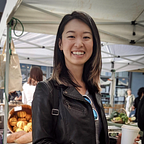Trash Talk #7: The 5 (New)“R”s of Sustainability
“Reduce, Reuse, Recycle” is a catchphrase so popular there is even an emoji for it ♻️.
The ubiquitous triangular green arrows have been embedded into modern culture since the phrase was coined in the late 1970s, a collective mantra in one of the first waves of consumer environmental awareness. However, increased momentum in recent years has started introducing new R’s into revamped framework s— some that now include anywhere from 5 to 14! This episode summarizes a few of these new “R’s”, and why they matter in your sustainability journey:
1. Refuse
It’s simple — first start by refusing what you don’t need. We live in a culture of consumption, where it is always about “more” and “better”. Take inventory of your current possessions. Do you really need more shoes, or do your current pairs get the job done? Will you actually use the freebies given away at a work conference, or will they go straight into the bin a few weeks later? Can you politely decline the plastic bag offered on your next shopping trip? What areas of your life can you just say NO to waste?
2. Reduce
Reduce means using less. Think about what you use and buy — could you consume less? Can you avoid impulse food shopping, and make a list to only purchase what you need? Can you drive less, reducing your use of gasoline, and take public transportation more? If there is something you cannot refuse in your life, see if you can reduce it.
3. Reuse / Repurpose
The idea here is to keep possessions in use as long as possible for their entire lifespan, and minimize the use of new resources. For example, rather than buying new towels for cleaning the house, cut up old T-shirts. Gift possessions you no longer need to others for free*. In some instances, it could make sense in the long-term to replace some single-use items (e.g. plastic water bottles) with ones that can be used over and over again in the long term (e.g. a reusable water bottle — OR even using any glass jar you have lying around!). This is also sometimes known as “upcycling”, since the materials are not wasted but creatively repurposed in a new way.
One of my favorite reusing practices is to purchase secondhand furniture instead of new, via Facebook Marketplace or Craigslist. Not only do you save a lot of money, you’re saving all of the resources that would go into producing a new piece, and you can also often find unique or vintage pieces that don’t exist elsewhere.
4. Recycle
Only if the other four options don’t work, then should you recycle, so that the value of raw materials can be recovered rather than entering the waste stream. In addition to the basics for paper and plastic, do some research to see where you can recycle some of the less common materials — electronics, fabrics, food composting, etc. — there are facilities in most major cities that take these.
5. Rethink
A theme present in all these steps is this last one — RETHINK! Challenge yourself to adopt a new mindset around consuming and discarding. Before each purchase, stop and ask yourself — Why am I purchasing this? Why do I need this? Do I really need this? Bring awareness to your decisions, and all else will follow.
For more inspiration, check out this 20-min short film by The Story of Stuff.
_________________________________________________________________
[*] Pro-Tip: There is an AMAZING organization called the Buy Nothing Project that connects members of a local community to give away their belongings to others for free. I highly encourage everyone to check out. They have chapters all over the world, each one with its own Facebook group where people can post things they’d like to give away, or things they are looking for. In my local chapter, I have given away anything from homeware to clothing to yoga blocks, and received a zucchini spiralizer, garden seeds, and much more in return! It truly is one person’s trash is another one’s treasure.
